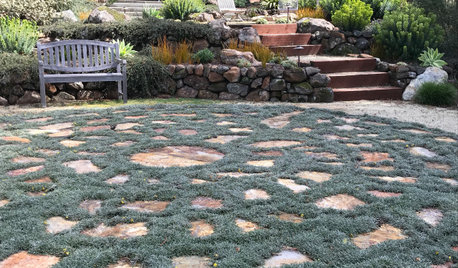Killing off existing lawn and re-seeding...?
tlazar39
14 years ago
Related Stories

GARDENING GUIDESHow to Plant a New Lawn From Seed
Choose from more grass varieties and save money over sod by starting your lawn from seed
Full Story
GARDENING GUIDESHow to Prep Your Ground for a Healthy New Lawn
Seed or sod that falls on weedy, lumpy soil is a wasted effort. Follow these steps to ensure that your new lawn will thrive
Full Story
SAVING WATERHouzz Call: Are You Letting Go of Your Lawn?
Many facing a drought are swapping turf for less thirsty plantings. If you’re one of them, we’d like to hear about it
Full Story
LIFESlow Living 101: Tips for Turning Off the Chaos
It may feel as though you're too busy to slow down and enjoy life. But even little changes can have a big effect
Full Story
LANDSCAPE DESIGNCalifornia Says Goodbye to the Sprawling Ornamental Lawn
New state rules will effectively limit turfgrass to 25 percent of the landscape in most new and renovated yards
Full Story
LANDSCAPE DESIGNSo Long, Lawn: 6 Walkable Ground Covers to Consider
These trample-proof, low-water plants can lower your water bill while greening up your garden
Full Story
BEFORE AND AFTERSSee 6 Yards Transformed by Losing Their Lawns
Wondering whether a turf lawn is the best use of your outdoor space? These homeowners did, and they found creative alternatives
Full Story
FRONT YARD IDEASBefore and After: Front Lawn to Prairie Garden
How they did it: Homeowners create a plan, stick to it and keep the neighbors (and wildlife) in mind
Full Story
MOST POPULARMeet a Lawn Alternative That Works Wonders
Carex can replace turfgrass in any spot, is low maintenance and adjusts easily. Add its good looks and you’ve got a ground cover winner
Full Story
LAWN ALTERNATIVESStop Fighting the Patchy Lawn!
Here are 3 situations where a garden may be a better idea than more turfgrass
Full StoryMore Discussions







bpgreen
tlazar39Original Author
Related Professionals
Ballwin Landscape Architects & Landscape Designers · Forest Park Landscape Architects & Landscape Designers · Manorville Landscape Architects & Landscape Designers · Suffern Landscape Architects & Landscape Designers · White Oak Landscape Architects & Landscape Designers · Milford Landscape Contractors · Surprise Landscape Contractors · Firestone Landscape Contractors · Holland Landscape Contractors · Middle River Landscape Contractors · Winter Gardens Landscape Contractors · Suisun City Landscape Contractors · Huntsville Swimming Pool Builders · Rockwall Swimming Pool Builders · Tucson Swimming Pool Builderseriocaulon
bpgreen
tlazar39Original Author
Billl
dave11
bpgreen